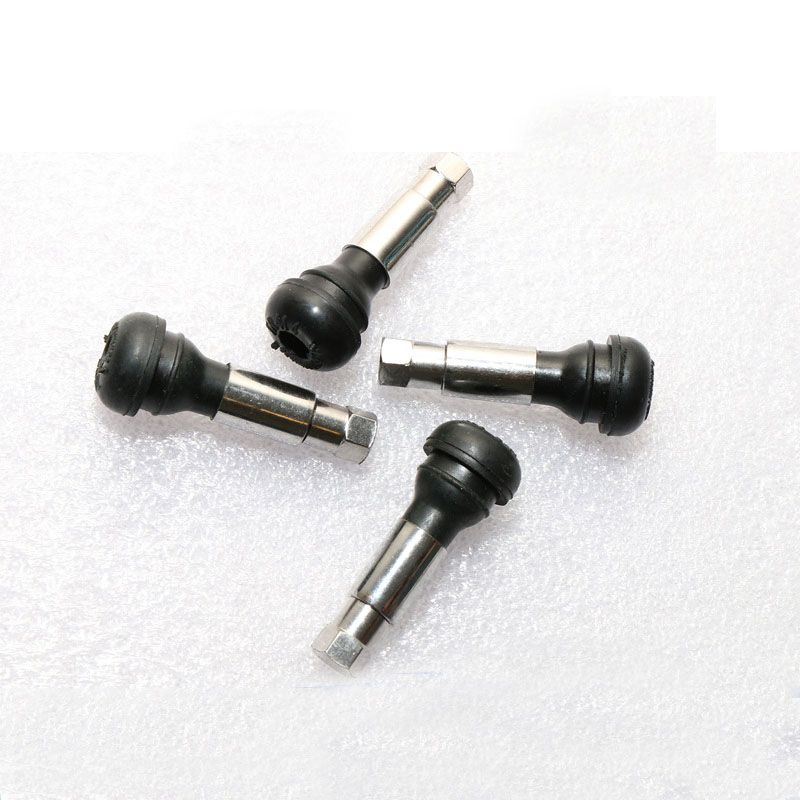You Should Never Let Your Tires Get Low
Why low tire pressure is dangerous, and what to do to avoid it.
Many drivers don't give a great deal of thought to tire pressure, let alone worry about low tire pressure but they should. Inadequate tire inflation can shorten the life of your car's tires, negatively affect your vehicle's performance, and maybe even cause a tire to fail. You absolutely want to avoid letting your tire pressure get too low.
Low tire pressure can cause a blowout. Anyone who has ever had the misfortune of suffering a tire blowout knows how traumatic it can be. When air pressure gets too low, the tire's sidewalls flex more, and heat builds up within the tire. If the overheating gets severe, a section of the tire's rubber can separate from its carcass the mix of fabric and steel that the tire is built on. If this happens suddenly, a blowout can result. A blowout is sudden and unexpected and can cause a loss of control that leads to an accident.
The biggest chance of this happening is when you're on the interstate at higher speeds; there's less of a chance in stop-and-go driving because the tire is turning slowly and not building up as much heat. Still, even at lower speeds, there are dangers. A tire with less air in it is softer, deflects more readily, and is more easily punctured by the sharp edge of a pothole.
Low Tire Pressure Hurts Fuel Economy
Low tire pressure worsens fuel economy. That's because an underinflated tire has a great resistance to rolling. Think of riding a bicycle: When the tires are properly filled, the bike is easy to pedal. But if the tires are low on air, the effort increases dramatically. It's the same with your car. It takes more energy to move it when the tires are low, and that extra grunt comes from the engine working harder, which uses more fuel.
According to the EPA, you can boost your car's mileage up to 3 percent in certain cases by making sure your tires are inflated at the proper pressure. We think that's a conservative number.
Low Tire Pressure Adversely Affects Handling
Low tire pressure hurts your car's handling as well. When a tire is underinflated, its sidewalls flex more than they were designed to during cornering and braking. The tread, the contact point with the road, squirms. The tire is less stable and has less traction. Response to your steering inputs gets slower and sloppy, and braking distances lengthen. Low tire pressure can be especially harmful during an emergency situation, when you're trying to avoid an accident and you need every ounce of your car's responsiveness and cornering or braking traction. Low tire pressure robs your tires of the grip and responsiveness they need to help you avoid accidents.
Low Tire Pressure Will Cost You
Low tire pressure also reduces tire life. Because low tire pressure distorts the tire's footprint—where your car's rubber contacts the road—tire wear can increase dramatically. This often shows up in unusually heavy wear on both a tire's inner and outer shoulders. This damage will shorten a tire's life, leading to premature replacement of this costly vehicle component.
Are Your Vehicle's Tires Underinflated?
There's a quick and easy way to tell if your car has low tire pressure:
Locate the tire-pressure recommendations provided by your car's manufacturer. You can find these on the car's driver's-side doorjamb or in the owner's manual.
Check the air pressure in your car's tires. You can use a handheld tire-pressure gauge; these are available for less than $10 at an auto-parts store.
Compare the tire-pressure readings with the automaker's recommendations. The tires need to be "cold" for you to get an accurate reading, so take your measurement either first thing in the morning or at least three hours after driving.
According to the National Highway Traffic Safety Administration, it's good practice to check tire pressure at least once a month. Also be aware that swings in temperature can affect the pressure in your tires. For every ten degrees the temperature drops, tire pressure drops one pound. So the difference between summer highs and winter lows can cause a significant loss of tire pressure—another good reason to check pressures monthly.
At this point, you may be wondering about the value of a tire-pressure monitoring system (TPMS). Federal law requires automakers to provide a TPMS as standard equipment. This law went into effect in 2008, so all vehicles that are 2008 or newer have this amenity.
A TPMS warns the driver when tires are low on air, but this warning isn't issued until a tire's air pressure is 25 percent below the automaker's recommended pounds per square inch. That amount of underinflation is severe. A TPMS won't alert you to the type of mild to moderate underinflation that can have a mild effect on performance or fuel economy, which you don't want either.
Maintaining adequate tire pressure allows your vehicle to deliver the fuel economy, handling, and safety it was built to provide. Checking your vehicle for low tire pressure every month can optimize your car's performance and save you money at the gas pump. Do it!
























